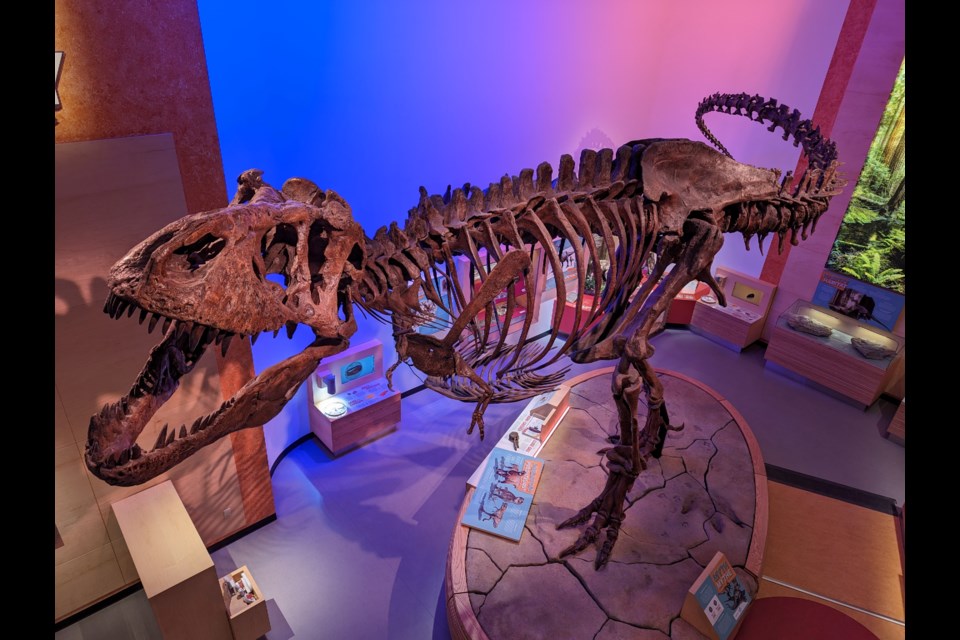The Royal Saskatchewan Museum is a natural history museum located in Regina, the provincial capital, and is one of the largest museums in Western Canada, housing dioramas, learning activities, and a deep dive into the past, present, and future that will entertain the whole family.
The museum is located at 2445 Albert Street in Regina and is open from 9:30 a.m. to 5 p.m. daily. Admission is by donation — the standard amount is $5 per person.
“One of our provinces best destinations is the Royal Saskatchewan Museum,” Parks, Culture and Sport Minister Laura Ross said. “This summer, the museum is hosting exciting, fun filled activities for guests of all ages, alongside their world-class exhibits and interactive displays. There is always something new to explore at the museum.”
From July 2 to September 4, there are several fun activities taking place at the museum.
The Royal Saskatchewan Museum (RSM) has two main sections. First, the main building is where visitors can explore a wide range of exhibits and displays showcasing the history of Saskatchewan and the surrounding areas. The second section is the archives and collections storage, where the scientists make the science happen.
Main Building — Exhibits, dioramas, and activities
In the main building, visitors will learn about the province’s geological history, including the era when it was an inland sea, its natural history (including the unique plant and animal species of the grasslands), and its First Nations history, including an exploration of traditional Indigenous culture and lifestyle and the ongoing impact of colonial policies.
Of course, no visit to the RSM would be complete without a close look at the palaeontology section — fun fact, the RSM is home to the world’s largest and oldest Tyrannosaurus Rex! Nicknamed Scotty, the super-predator’s fossilized bones were discovered by an RSM research team in 1991. It took more than 20 years to separate stone from stone, resulting in a 65 per cent complete skeleton that was used to create the giant model in the dinosaur exhibit.
Home: Life in the Anthropocene
The RSM’s latest exhibit is Home: Life in the Anthropocene. The Anthropocene is the scientific term for the latest geological era, in which the greatest impact on the planet’s climate, environment, and biodiversity is from human beings. The exhibit features a huge “Science on a Sphere” floating globe system that provides an immersive journey of the earth powered by data from NASA and NOAA.
Science on a Sphere® in the Home Gallery
Join a museum educator in the SOS theatre in the Home Gallery for this captivating program every Saturday and Sunday from 10 a.m. -12 p.m.
Developed by researchers at the National Oceanic and Atmospheric Administration, Science on a Sphere® is an educational tool used to help illustrate Earth Science to people of all ages. It includes animated images of atmospheric storms, climate change and ocean temperatures that are shown on the sphere and used to explain complex environmental processes.
Archives and Collections
The second section of the Royal Saskatchewan Museum is what gives life, pun intended, to the visitor’s section. Here, scientists from a variety of disciplines and backgrounds study our world through the lenses of paleontology, archaeology, biology, zoology, and more.
Saskatchewan has rocks from the end of the Cretaceous period, when the dinosaurs went extinct, and geological layers and zones that makes it particularly fascinating. This makes it a centre for scientists studying the last million years of the earth’s history. For example, graduate students from all over the world help the RSM’s curators analyze plant and insect life from just before the dinosaurs went extinct to the present day. By studying the differences, they can determine the impacts of climate on all forms of life.
The RSM is the official repository for natural history items in the province. They have samples, data, and taxidermized animals by the hundreds — many of which are now threatened, endangered, or even extirpated in the Prairies. Members of the public have found and contributed many of the items, and the RSM’s curators see the public as important partners in their quest to understand and preserve history.
The RSM’s collections also house many important and culturally significant First Nations artifacts. The museum’s curators and administrators work closely with Indigenous communities to make sure these artifacts are preserved, respected, and understood.
Don’t miss the Royal Saskatchewan Museum on your trip to Saskatchewan! Understanding the part is a critical component of making sense of the present, and the support of visitors helps the museum fulfil their mandate and continue providing educational and awe-inspiring experiences for everyone who walks through their doors.
Fossil Field Station
Visit the Field Station located on the lower level in the Earth Science Gallery. Explore this show-and-tell table and learn about what it’s like to be a Royal Saskatchewan Museum paleontologist during the summer field season.
The Field Station program will be available Monday to Friday from 10 a.m. -12 p.m.
SaskTel Be Kind Online Learning Lab
Located on the upper level in the Life Science Gallery, the Learning Lab is a hands-on space to explore through touch tables, microscopes and educator-led activities with new themes and activities throughout the summer.
The lab will be open daily from 1:30 p.m. -3:30 p.m.
Gallery Hunt
This self-guided scavenger hunt is fun for all ages. Locate specific items throughout the galleries and enter to win a prize from the Gift Shop.
To learn more about the Royal Saskatchewan Museum’s programming and world class research, visit , or their social channels @royalsaskmuseum on Facebook, Twitter, Instagram and YouTube.




